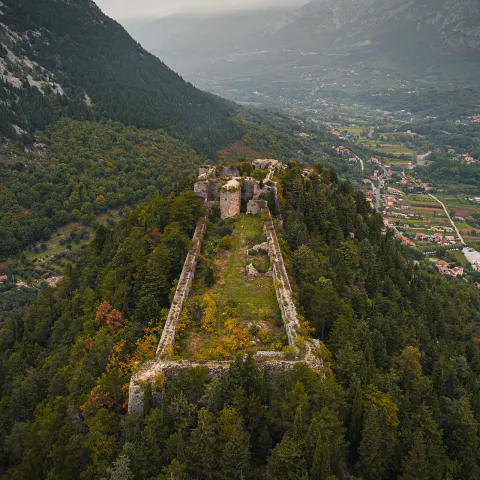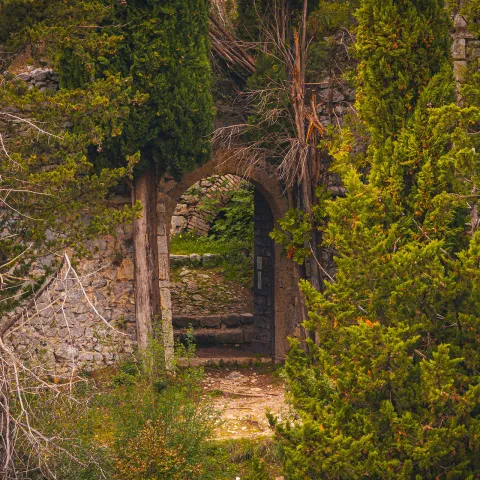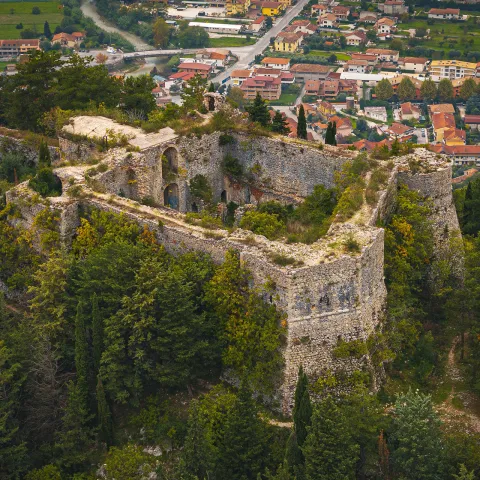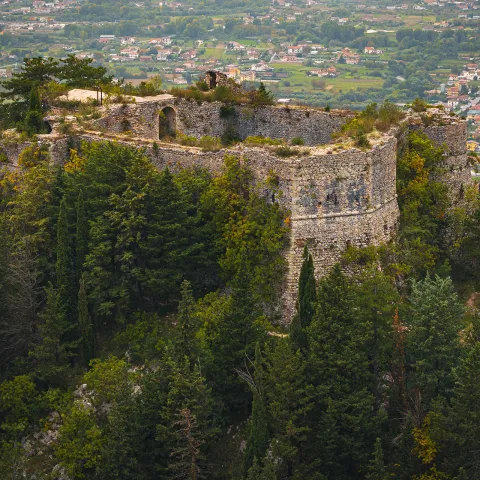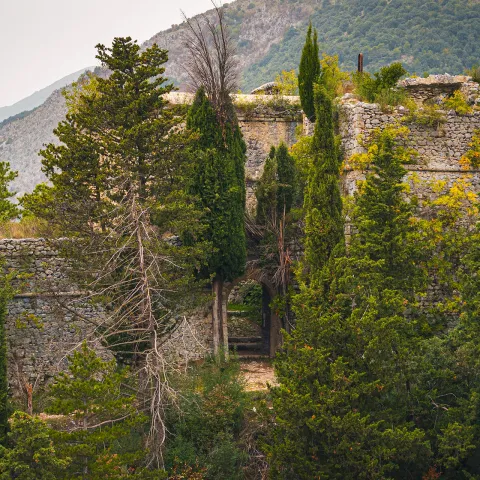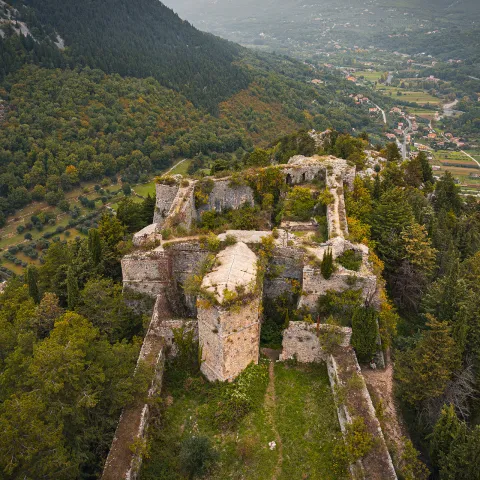San Casto Hill natural monument
San Casto Hill, dominating the surrounding plain and controlling access to the Roveto Valley, has been inhabited since the Final Bronze Age due to its strategic position
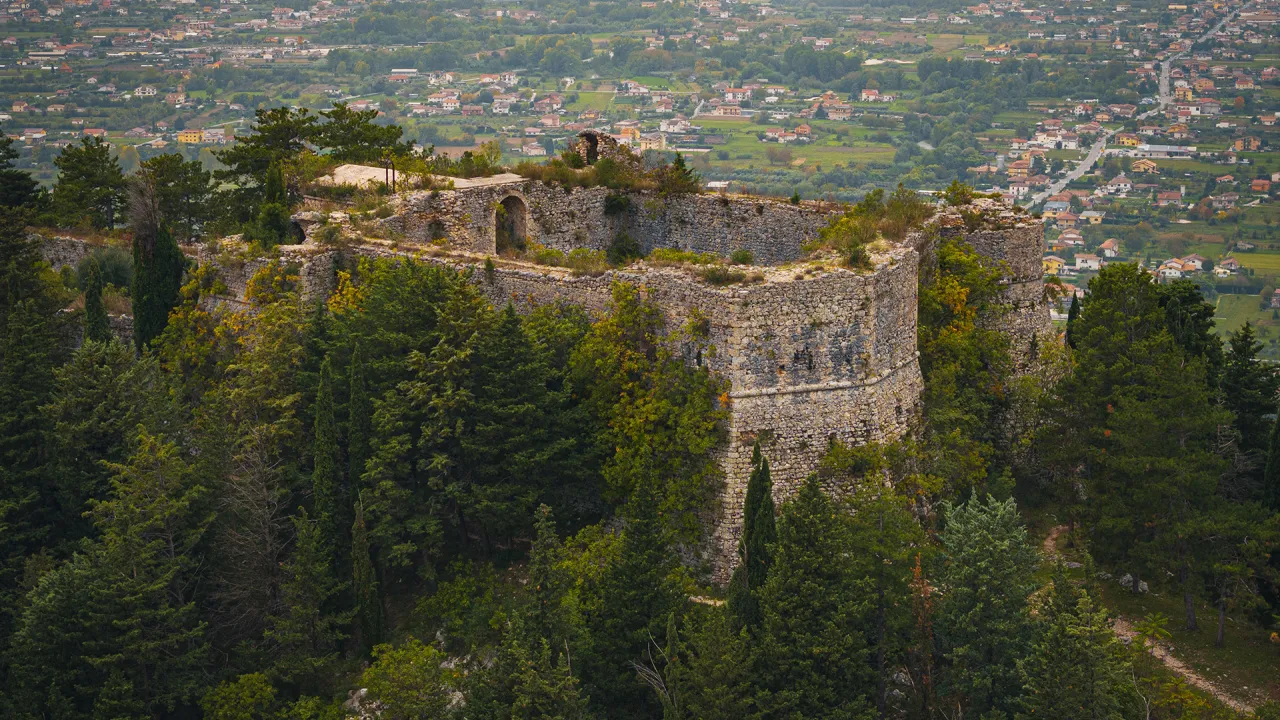
In later times, its particular defensive significance is evidenced by the remains of polygonal walls, medieval fortifications and the construction of a Renaissance castle. At various points on the hill, sections of second-style polygonal masonry (opus polygonal), constructed with large freshly hewn limestone blocks, can still be seen. These walls date back to the foundation of the Latin colony in 303 BC. Near the bell tower of the Church of Sant'Antonio Abate and the Church of Madonna delle Grazie, portions of the defensive circuit are preserved in several rows. The city walls once enclosed not only the narrow flat area where the Roman city developed, between the slopes of Mount San Casto and the Liri River, but also extended upward towards the ridge of the hill, encompassing the entire slope facing the city. From there, the walls reached the site where the castle was later built, before descending toward the Liri River, as shown by one of the imposing sections, constructed with a more refined technique, still visible along the northern slopes of San Casto, north of the Rava Rossa. This section reaches a height of 3.40 meters. From here, the walls returned towards the urban center, enclosing the sacred area beneath the present-day Cathedral of Santa Maria Assunta.
San Casto Hill also played an important cultural and religious role. Some materials found near the castle suggest the presence of a votive stele, possibly linked to a Republican-era sanctuary. Additionally, located near the Rava Rossa, on the rock walls having a typical reddish colour due to the presence of iron oxide, there are two votive shrines (with traces of a third) and corresponding dedication inscriptions. These inscriptions, dating between the late 1st century AD and the 2nd century AD, identify the deity worshipped here as Silvanus, the god of forests and uncultivated lands.
At the summit of the hill stand the remains of the castle, historically known as Rocca Sorella, first mentioned in connection with the Lombard occupations during the time of Theodosius (696–706). The structure visible today was built in 1520 by Evangelista from Carrara di Bergamo on the remains of an earlier medieval bastion. Over the centuries, the castle passed through the hands of numerous feudal lords until Antonio Boncompagni, the last owner, ceded it to state property in 1796.
PHOTO GALLERY

VIDEO



